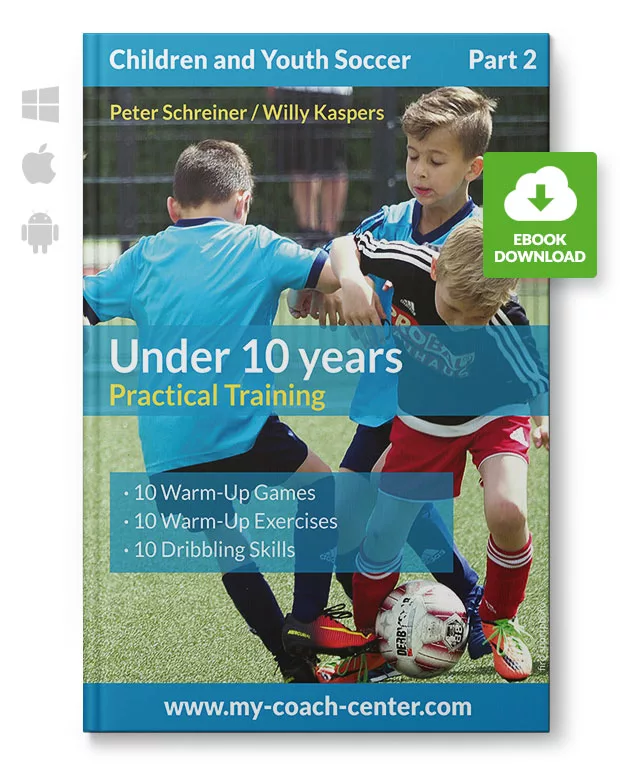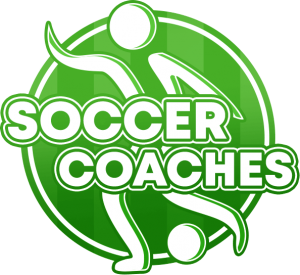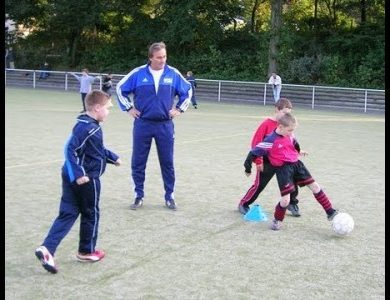In the world of soccer training, especially when it involves 5-year-olds, the approach significantly differs from the methods used with older children or adults. This early stage in a child’s life is crucial for fostering a love for physical activities, and soccer serves as an ideal platform. Therefore before showing you some drills, it’s essential to remember that for children at this age, the emphasis should be on enjoyment and engagement rather than competition or rigorous training.
Practical Soccer Training for under 10 years

In part 2 of the series “Children and Youth Soccer”, Peter Schreiner and Willy Kaspers will present 10 warm-up games, 10 warm-up exercises and 10 training forms for dribble training.
The Importance of Fun and Developing Basic Motor Skills Through Soccer
For 5-year-olds, life is a vibrant journey of exploration. Soccer training at this age should mirror this exploratory spirit. It’s important to keep training sessions lively and engaging, ensuring they are packed with fun activities. At this stage, the objective is not to instill a competitive edge but to nurture a fondness for the game. This approach helps in laying a strong foundation for a healthy and active lifestyle.
All kids need is a little help, a little hope and somebody who believes in them.
Earvin „Magic“ Johnson Jr
Soccer offers an excellent opportunity for young children to develop their fundamental motor skills. At 5, children are still in the early stages of developing coordination, balance, and spatial awareness. Incorporating simple soccer activities like running with the ball, basic dribbling, and kicking can significantly enhance these skills. Such activities are not only beneficial for their physical development but also enjoyable for the children.
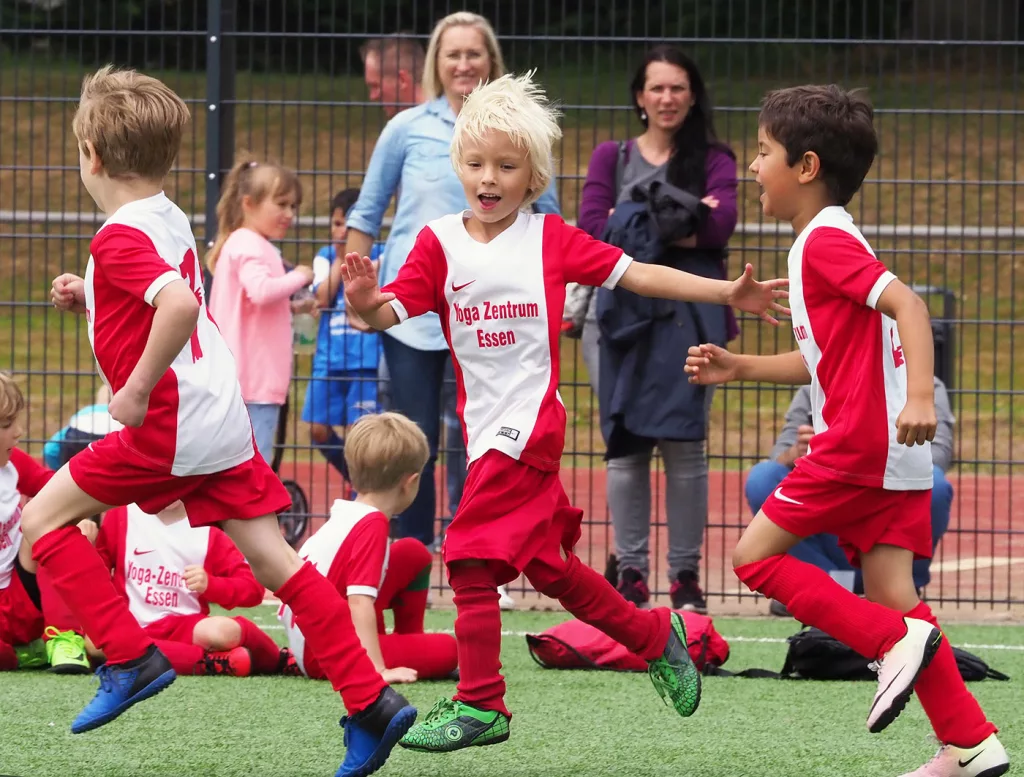
Keeping Training Sessions Appropriate for Young Attention Spans
One critical aspect to consider when training young children is their short attention span. Therefore, it’s advisable to keep soccer training sessions brief, ideally no longer than 40 minutes. During this time, varying the activities is key to maintaining the children’s interest and engagement. This approach ensures that they remain focused and enjoy their time on the field.
Incorporating Imagination into Soccer Training
Integrating elements of imaginative play into soccer training can significantly enhance the experience for 5-year-olds. By setting up playful scenarios, such as dribbling the ball to escape imaginary monsters or scoring goals to ‘save the day,’ we not only make the sessions more engaging but also contribute to their cognitive development. This method encourages creativity and problem-solving skills, making the learning process more dynamic and enjoyable.
Emphasizing Teamwork Over Competition
While it’s important to downplay competitiveness at this age, fostering teamwork can be incredibly beneficial. Engaging the children in simple passing games teaches them the value of playing with others. It’s about instilling the principles of sharing, cooperation, and functioning as part of a team. Such early lessons in teamwork lay the groundwork for better social skills and collaborative abilities in the future.
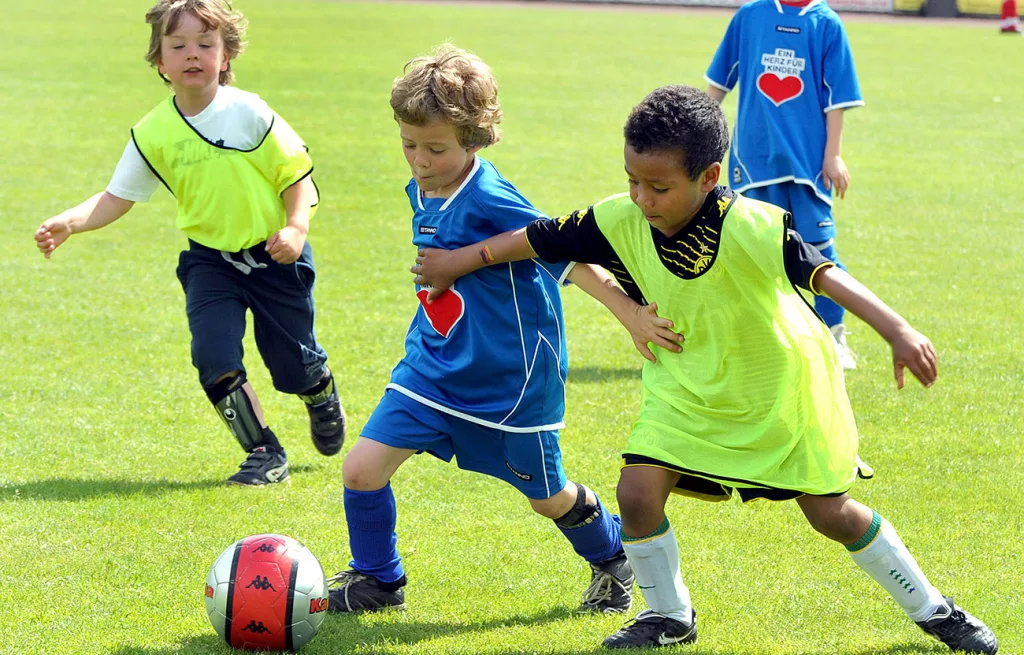
The Role of Positive Reinforcement and Ensuring a Safe and Secure Environment
Positive reinforcement is a powerful tool in early childhood development, especially in sports. Celebrating every effort and achievement, no matter how small, builds confidence and fosters a positive association with physical activity. This approach is about encouraging persistence and effort, which are key qualities not just in sports but in all areas of life.
Safety is paramount in any sporting activity, more so when it involves young children. Ensuring a safe play environment with age-appropriate equipment is crucial. Having a first aid kit on hand and constant adult supervision helps in preventing accidents and managing any unexpected injuries. This aspect of training reassures parents about the safety of their children, which is crucial for a positive training experience.
The Value of Parental Involvement
Encouraging parents to participate in their child’s soccer training can be very beneficial. Whether they are present as spectators or actively involved in activities, their involvement can greatly comfort and motivate the children. Additionally, it helps in building a community spirit around the sport, enhancing the overall experience for both children and parents.
3 Soccer Drills and Games for 5 Year Olds
The following 3 soccer drills for kids are easy to set up and adapt. Remember, the ultimate goal in youth soccer at this age is to create an engaging and fun training for the kids.
Dribbling Game – The Goal Hunt
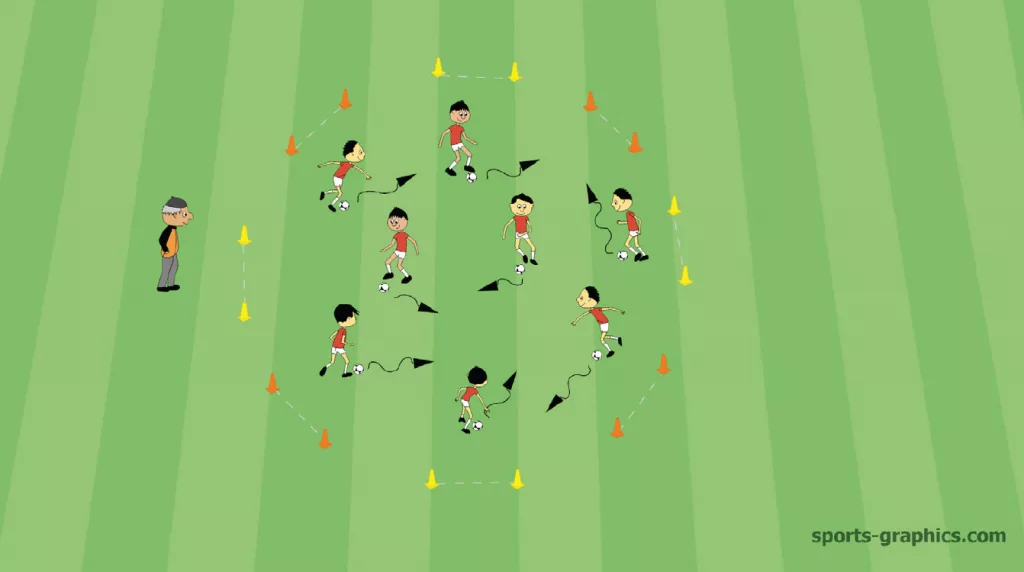
Organization
Build a circle (20 meters in diameter) with goals of cones with 2 colors freely in space, in our example orange and yellow.
Procedure
- At the sign of the coach, the children dribble for 30 seconds and try to dribble
through as many goals as possible. - After a red goal, players may only dribble through a yellow goal.
- Which player scores the most goals?
Variations - Only dribble through the gates with the right or left foot.
- Doing a task after a goal: For example lie on your stomach, jump over the
ball three times or sit on the ball for a short time. The imagination of the
coach has no limits.
Dribbling Game – Island search
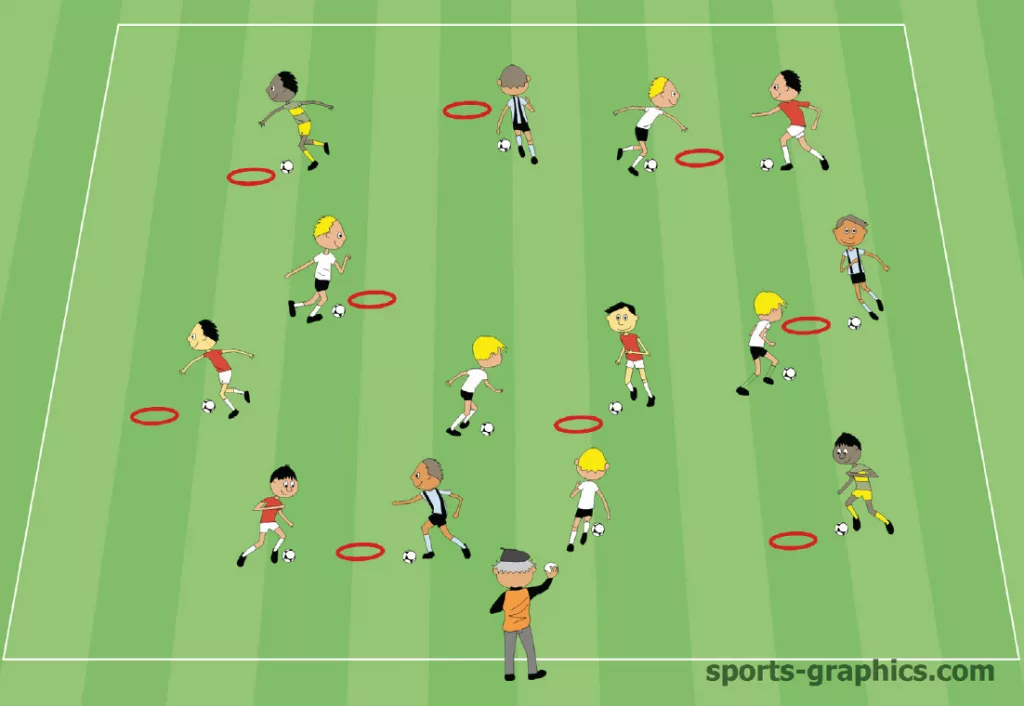
Organization
In a field about 20m x 20m you place 2 rings less than there are players. In our example we have 14 kids and 9 rings.
Procedure
- The kids dribble freely in the marked space.
- At the sign of the coach (optical or acoustic), the kids are looking for an island. The coaches sign can be for example: bounce a ball, lift a ball, hide a ball behind back, …
- Because there are not enough rings left, there are 1-5 players left who can not find an island. They get a minus point.
- Whoever has three minus points, has to leave the field.
- The coach removes accordingly to the kids on the field.
Advanced Methodical Hint
The coach should walk around the field and give visual signals so that the players must always look at him while dribbling so as not to miss the starting signal. So they learn the dribbling with raised head and perception of the environment.
Dribbling Game – Ball Exchange
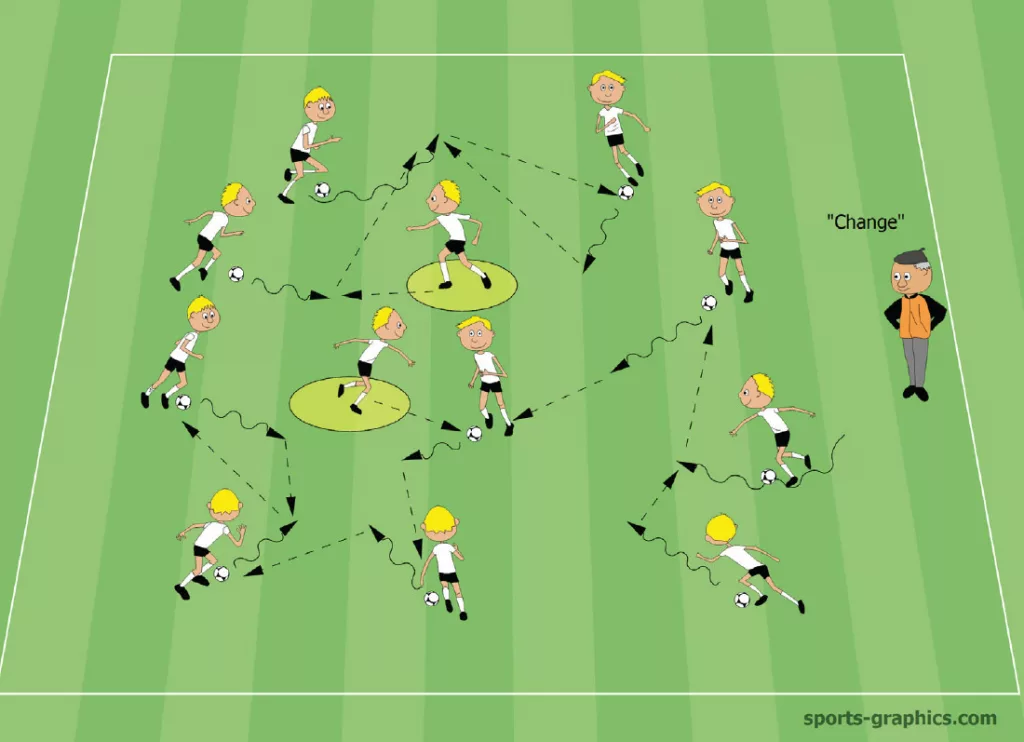
Organization
The kids move freely in a limited space of about 20m x 20m. 2-3 kids start with no ball, the rest dribbles.
Procedure
- The dribbling players leave their ball on a visual or acoustic signal of the
coach and look for a new ball. - Two players come away empty-handed.
Conclusion – Child-oriented training
Training 5-year-olds in soccer goes beyond teaching the sport itself; it’s about cultivating a love for physical activity, teamwork, and enjoyment. By focusing on these aspects, coaches and parents can provide a holistic and enriching experience that lays a strong foundation for a healthy and active lifestyle.

